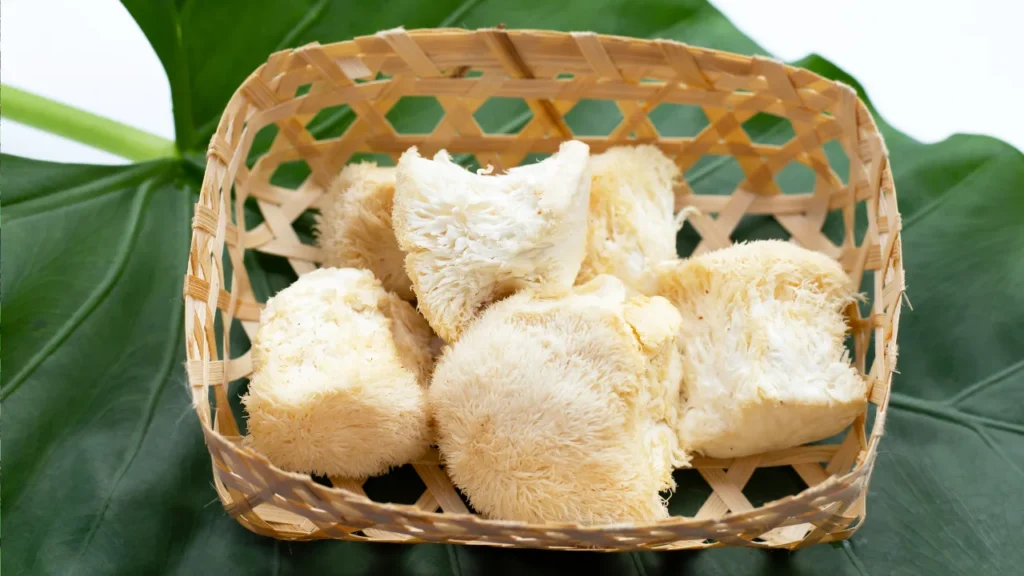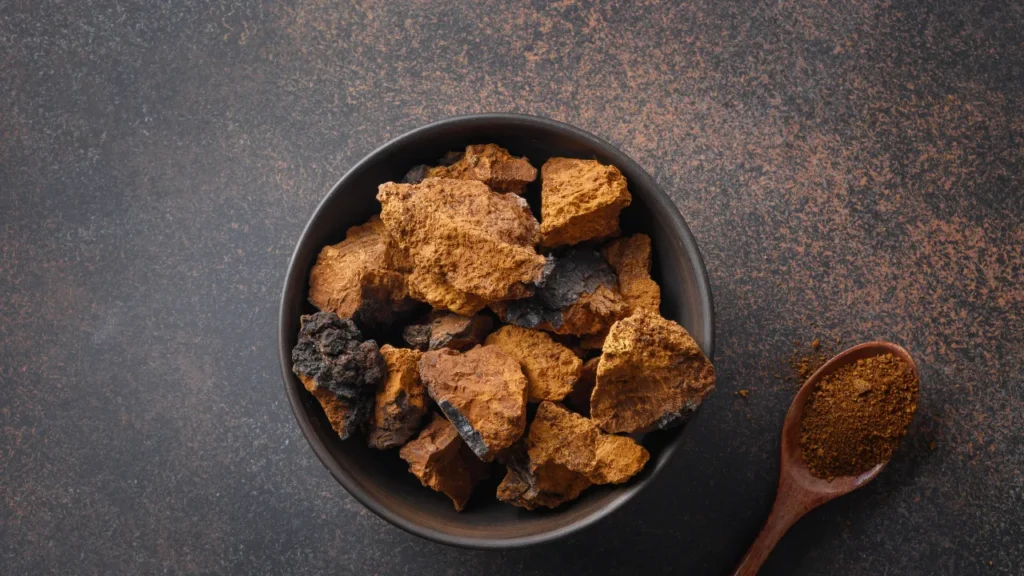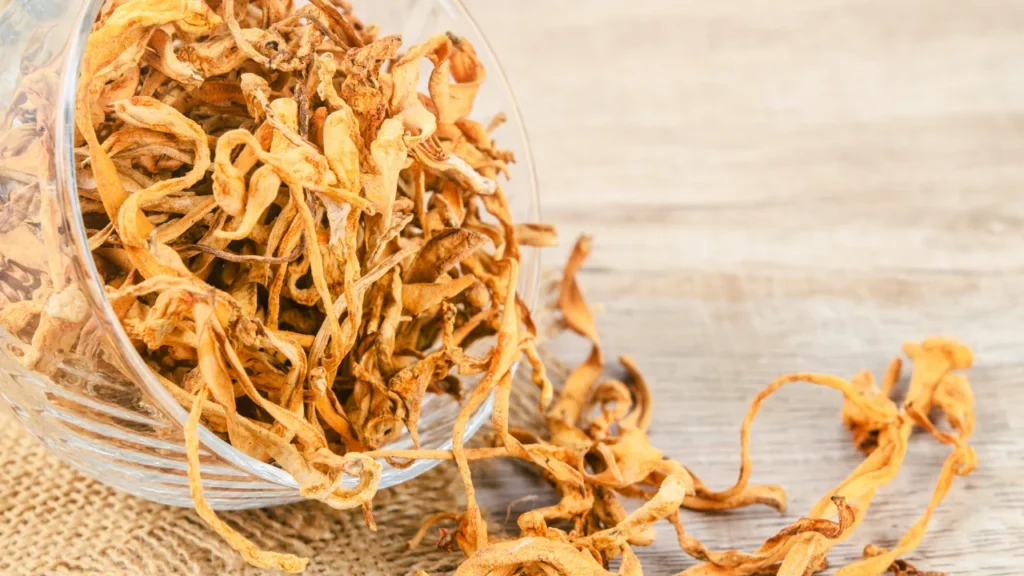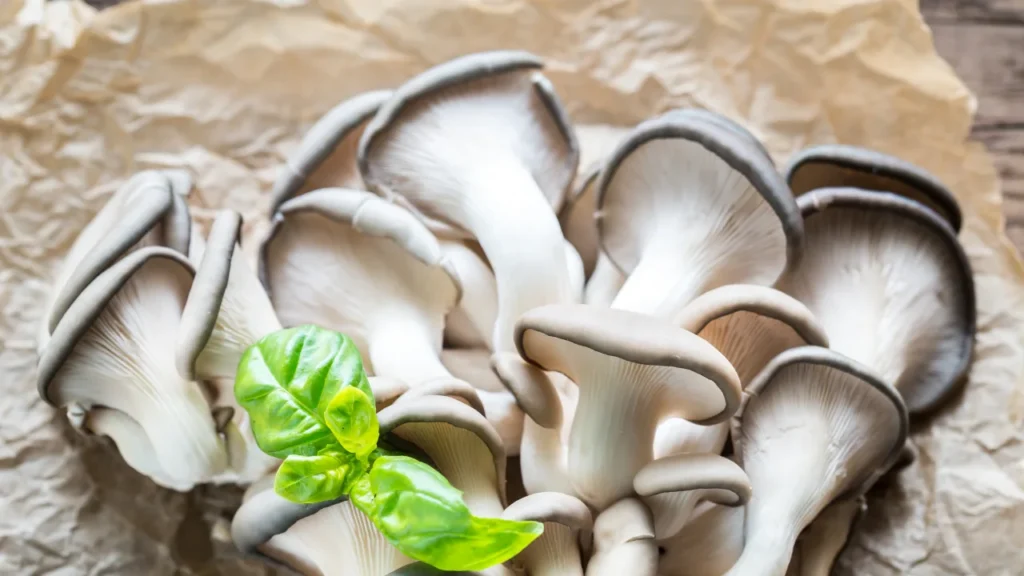Delve into the world of medicinal mushrooms and discover nature’s potent healers. From the immune-boosting qualities of reishi to the cognitive-enhancing effects of lion’s mane, certain mushroom types are known for their remarkable wellness benefits. Explore the modern science behind these powerful fungi to embark on a journey toward a healthier body and mind.
If you’ve ever gone shopping for mushrooms to put in a salad or on top of a pizza, you’ve probably noticed there might be several mushroom types or varieties to choose from, depending on the grocery store. However, mycologists, experts who study fungi, have discovered over 6 million species of fungi worldwide and around 11,000 named species of mushrooms in North America. Medicinal mushrooms are a unique class of fungi distinguished by their therapeutic properties and historical significance in traditional medicine. While some edible mushroom types, like shiitake, have medicinal properties, not all medicinal mushrooms are used for cooking because of their unappealing texture and taste.
You May Also Like:
Supplements For Sanity: Mushrooms For Mental Health
FRESHCAP VS REAL MUSHROOMS: WHICH IS THE BEST FUNCTIONAL MUSHROOM BRAND?
Functional vs. medicinal mushroom types
The terms “medicinal mushrooms” and “functional mushrooms” are often used interchangeably in contemporary wellness discussions, but they aren’t exactly the same thing. While all medicinal mushrooms are functional due to their health-supporting properties, not every functional mushroom carries the medicinal label in the traditional sense. The distinction often hinges on the depth of research and historical evidence backing their use for specific medical conditions. Functional mushrooms are often recognized for their general health-enhancing properties, but they lack the extensive medicinal history or research portfolio characteristic of medicinal mushrooms.
The science behind medicinal mushroom types
Medicinal mushrooms contain many bioactive compounds, including polysaccharides (like beta-glucans), triterpenoids, and antioxidants. Think of these compounds as the mushroom’s medicinal toolkit. Each tool has a specific job that helps boost your health:
Polysaccharides, especially beta-glucans, are large, complex sugar molecules known for their unique ability to support and enhance the immune system and may potentially help prevent cancer. β-glucans, pronounced “beta-glucans,” are a type of soluble fiber found in the cell walls of certain plants, yeast, fungi, and medicinal mushrooms.
Triterpenes are a class of organic chemical compounds produced by various plants and some animals. They could have a calming effect on the body by lowering cholesterol and reducing inflammation. Triterpenes also protect cells from oxidative damage, potentially slowing the aging process. Additionally, triterpenes have shown promise in cancer research, with potential abilities to inhibit the growth of cancer cells, induce cell death, and prevent metastasis.
Antioxidants are compounds that scavenge free radicals from the body’s cells and help prevent or reduce the damage caused by oxidative stress—the wear and tear on cells caused by daily life and environmental factors like pollution and UV radiation. Antioxidants are like bodyguards for your cells, protecting them from damage and keeping them healthy.

10 powerful medicinal mushroom types for optimal health
The following profiles highlight ten medicinal mushrooms, detailing their traditional uses, purported health benefits, and the scientific research surrounding them:
1. Reishi (Ganoderma lucidum), also known as the “king of mushrooms,” has a distinctive red, kidney-shaped cap with a glossy, varnished appearance. It thrives in humid wooded areas and grows predominantly in Asia. For over two millennia, Asian cultures have associated reishi with health, wellness, and longevity and use it for its perceived life-extending properties. Reishi is purported to boost the immune system, reduce stress and anxiety, and have anti-inflammatory and liver-protective effects. This clinical review explores reishi’s potential to enhance the immune system and reduce stress.

2. Lion’s Mane (Hericium erinaceus), or the “pom pom mushroom,” is so named because of its long, white, shaggy spines. Prevalent in North America and Asia, this massive fungus grows up to 40 cm (about 15 inches) in diameter and lives on hardwood trees, consuming dead wood. Dating back to the Ming Dynasty (1368–1644) and possibly earlier, traditional Chinese medicine has revered lion’s mane for its purported ability to improve memory and focus.
In addition to its anti-inflammatory and immune-boosting properties, lion’s mane is credited with enhancing brain function and supporting overall neurological health. Research indicates its positive effects on cognitive function and nerve growth factor production.

3. Chaga (Inonotus obliquus), also known as the “black gold”, is technically not a mushroom but a parasitic fungus. It has a rugged, black exterior and a rust-colored interior. “Chaga” is the common Russian name for a canker that forms after the parasitic fungus, Inonotus obliquus (or I. obliquus), infects a hardwood tree. This parasite lives mainly on birch trees in cold climates like Siberia, Northern Europe, and Canada. Since the 16th century, folk medicine practitioners have used chaga for its health-promoting properties; it remains in use today for cancer treatment in Russia, China, Korea, and Japan.
Chaga is known for its antioxidant and anti-inflammatory properties, immune support, and potential anti-cancer effects. Current research focuses on chaga’s possible benefits for immune health and cancer prevention. This promising study reports that chaga may inhibit the growth of several human colorectal cancer cell lines.

4. Trametes versicolor, often referred to as”turkey tail,” earns its nickname from its distinctive fan-shaped appearance with multicolored, concentric brown, tan, and white rings, reminiscent of a turkey’s tail. This colorful mushroom is often found on dead logs worldwide. Turkey tail appears in The Devine Farmer’s Classic of Herbalism, the oldest known herbal text in the world, written around 200 BC.
While not considered an edible mushroom because of its thick, leathery texture, turkey tail is a formidable medicinal mushroom known for promoting vitality, supporting healthy liver function, and fortifying bones and muscles. This 2012 clinical trial reveals its potential in cancer therapy and immune system enhancement.

5. Cordyceps (Ophiocordyceps sinensis), also known as “caterpillar fungus.” is aptly named for its unique growth pattern: a long, slender, orange-brown mushroom emerging from the larva of caterpillars produced by the ghost moth that inhabits eastern Asia, mainly from the Tibetan Plateau. Traditional Chinese medicine has utilized cordyceps for centuries to enhance stamina and athletic performance. Increased demand for this rare mushroom has surged in recent years, making it the most expensive fungus in the world.
In addition to increasing energy and endurance, cordyceps have potential immune-boosting and anti-inflammatory effects. A pilot study suggests that supplementation with Cs-4 (Cordyceps sinensis) improves exercise performance and contributes to wellness in healthy older individuals.

6. Maitake (Grifola frondosa), also known as the “hen of the woods,” is a large mushroom with overlapping layers of round, spoon-like caps, giving it the appearance of a chubby hen. It’s common in Japan and North America and is often found at the base of oak, elm, and maple trees. Maitake has been a culinary delicacy and a medicinal staple in Japan for centuries. Its esteemed value in feudal Japan was so high that it served as a form of currency.
Maitake gains recognition for its ability to regulate the immune system (immunomodulation), potential in cancer and HIV therapy, diabetes management, cholesterol reduction, and high blood pressure control. Research highlights its promise as an immunomodulating agent.

7. Shiitake (Lentinula edodes), also called “black forest mushrooms,” are distinguished by their characteristic umbrella-shaped brown cap with white speckles and a central stem. Shiitake mushrooms grow predominantly in East Asia and enjoy widespread cultivation in Japan, China, and Korea. Their cultivation in China can be traced back to 1209 during the Song dynasty, with medicinal use becoming widespread during the Ming dynasty (1368–1644). Shiitake mushrooms are among the most popular mushroom types worldwide due to their rich flavor and health benefits.
Shiitake mushrooms contain compounds that are believed to enhance immune function, lower blood cholesterol levels, and possess antitumor properties. A 2015 Randomized Controlled Trial highlights that daily consumption of shiitake mushrooms showed improved immune function in fifty-two healthy males and females aged 21-41 years. Additionally, the Memorial Sloan Kettering Cancer Center details shiitake’s potential for assisting in cancer prevention.

8. Agarikon (Laricifomes officinalis) “quinine conk” forms a massive, hoof-like fruiting body, often appearing white or pale and resembling a beehive. These mushrooms thrive in the old-growth forests of Europe, Asia, and North America, hanging on tree branches as high as 65 feet, with lengths exceeding two feet long and weights reaching up to 20 pounds.
Indigenous peoples of the Pacific Northwest Coast of North America and the Ancient Greeks have known and used agarikon to address various ailments since ancient times. Recent research shows its potential in supporting lung health and regulating blood sugar levels.

9. Oyster mushrooms (Pleurotus ostreatus), or “pearl oyster mushrooms,” are found worldwide in temperate and subtropical forests. Their broad, fan-shaped caps range in color from white to grey or tan. They grow in layered clusters on dead wood and are widely cultivated and consumed for their delightful flavor and texture. Recognized for their medicinal properties, oyster mushrooms have long been part of traditional medicine in Asia. In 1775, Dutch naturalist Nikolaus Joseph Freiherr von Jacquin identified and described the species. During World War II, parts of Europe, particularly Germany, used the pearl oyster mushroom as a food source.
A systematic review indicated that oyster mushroom intake may positively affect fasting glucose levels, total cholesterol, LDL cholesterol, and triglycerides, suggesting benefits for cardiometabolic health.

10. Enokitake (Flammulina velutipes), also called “golden needle mushrooms,” are slender, delicate mushrooms with long, thin white stems and small caps. They typically grow in the wild, clustered on various trees in East Asia. Since 800 AD, China has cultivated enokitake, celebrating its tender texture, unique appearance, health benefits, and nutrient richness.
Research suggests that enokitake has potential anti-tumor activities and is beneficial for metabolic health. The Frontiers Journal features an extensive article about enokitake’s Evidenced-Based Biological Activities and Health Promoting Properties.

Exploring medicinal mushroom types
The therapeutic potential of medicinal mushrooms is vast and varied, from boosting immunity to supporting cognitive function and potentially preventing cancer. Adding medicinal mushrooms to your daily health routine doesn’t need to be complicated. Whether trying them as new culinary dishes or taking them as supplements, these fungi provide a range of benefits that can enhance overall health and well-being. As with any health regimen, it’s important to consult with healthcare professionals to tailor the use of these mushrooms to individual needs and conditions.
For further research:
Are Mushrooms Healthy? Here’s What Experts Say | TIME
What are medicinal mushrooms? | Live Science
Mushroom supplements: Benefits, Risks And When To Avoid – Forbes Health
Mushrooms | The Nutrition Source | Harvard T.H. Chan School of Public Health
Important Note: The information contained in this article is for general informational purposes only, and should not be construed as health or medical advice, nor is it intended to diagnose, prevent, treat, or cure any disease or health condition. Before embarking on any diet, fitness regimen, or program of nutritional supplementation, it is advisable to consult your healthcare professional in order to determine its safety and probable efficacy in terms of your individual state of health.
Regarding Nutritional Supplements Or Other Non-Prescription Health Products: If any nutritional supplements or other non-prescription health products are mentioned in the foregoing article, any claims or statements made about them have not been evaluated by the U.S. Food and Drug Administration, and such nutritional supplements or other health products are not intended to diagnose, treat, cure, or prevent any disease.
